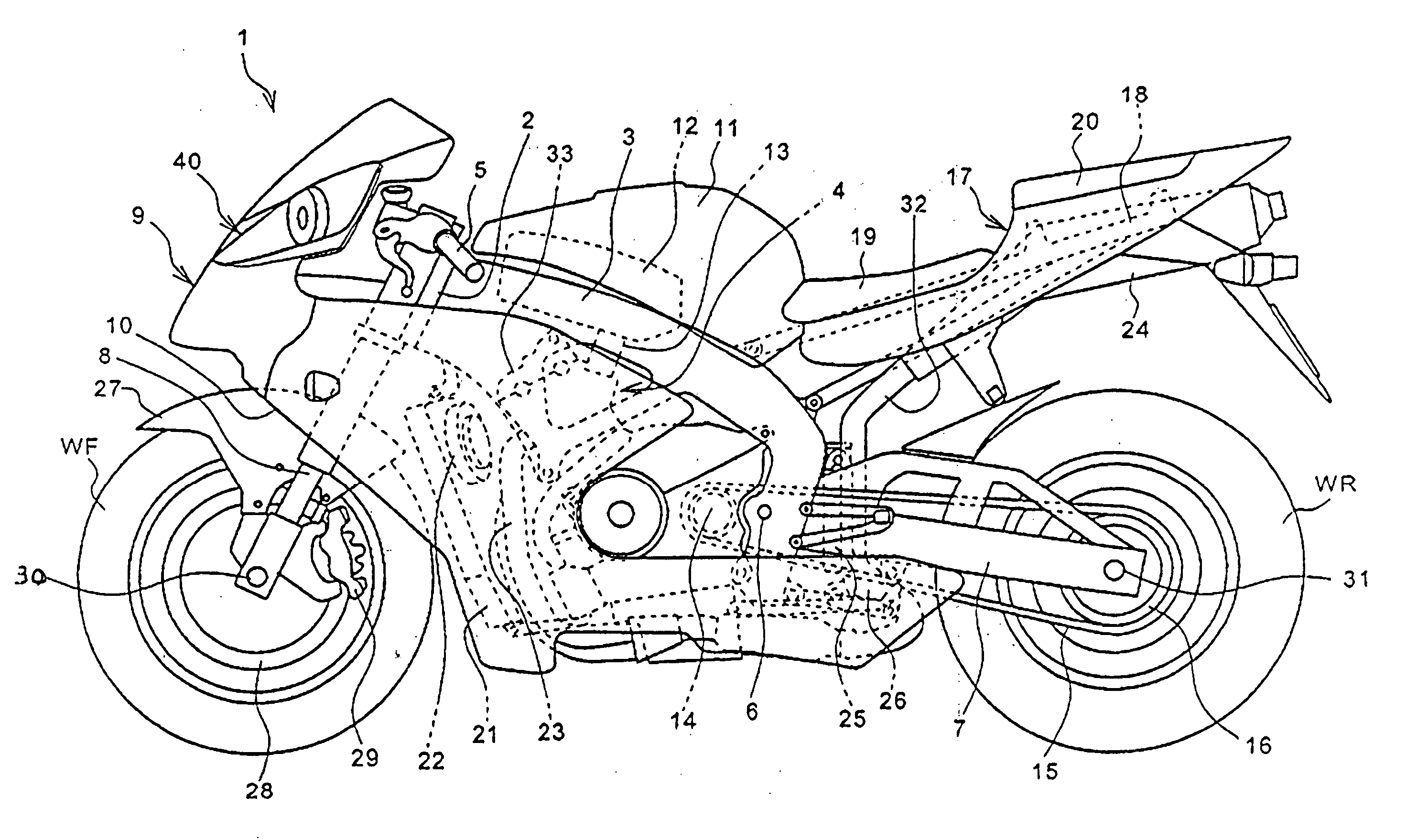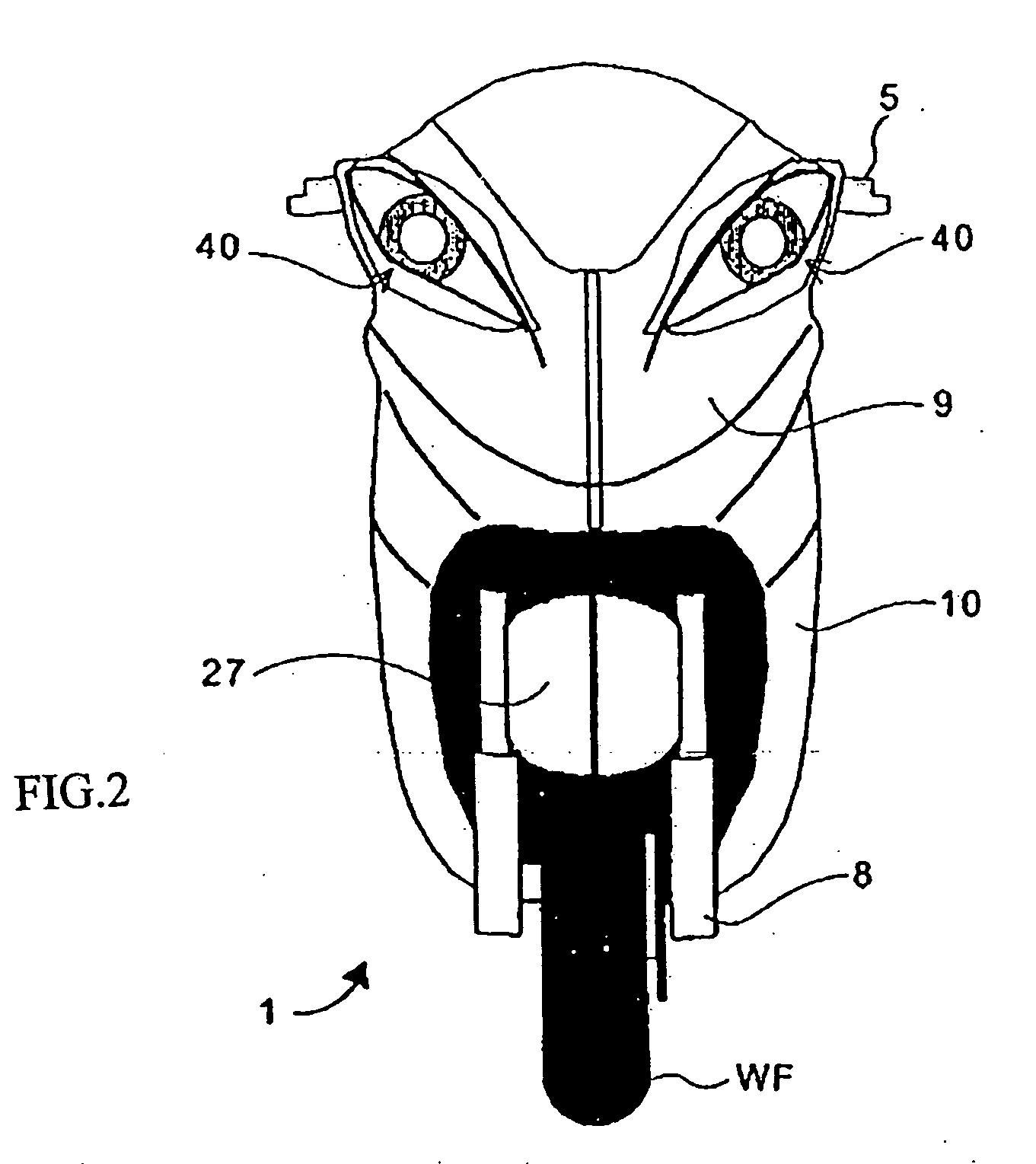Vehicular lighting system
a technology of lighting system and vehicle body, which is applied in the direction of roof, cycle equipment, lighting and heating apparatus, etc., can solve the problems of difficult to distinguish, difficult to easily distinguish, and relative deterioration, so as to achieve enhanced freedom of layout of lighting devices, enhanced degree of front side design, and enhanced effect of evok
- Summary
- Abstract
- Description
- Claims
- Application Information
AI Technical Summary
Benefits of technology
Problems solved by technology
Method used
Image
Examples
first embodiment
[0055]FIG. 4 are schematic explanatory drawings showing changes in appearance when the lighting locations are varied in the vehicular lighting system according to the present invention as described above. Reference numerals that are the same as those described above denote the same or equivalent portions. As shown in FIGS. 4(a) and 4(b), when the main light 41 and the plates 43a, 43b are lit, it is possible, as described above, to evoke the image of a “face” on the front side of the motorcycle not only under a brightly lit environment such as daytime but also in the nighttime. However, when only the main light 41 and the plate 43b are lit as shown in FIG. 4(c), or when only the main light 41 and the plate 43a are lit as shown in FIG. 4(d), there is a lack of elements constituting “eyes”, causing a marked reduction in the effect of evoking the image of a “face”.
second embodiment
[0056]FIG. 5(a) is a front view of a motorcycle to which a vehicular lighting system according to the present invention is applied. Reference numerals that are the same as those described above denote the same or equivalent portions. In this embodiment, the lighting locations of the headlight 40 are set as the main light 41, and the upper frame 44 and the lower frame 45. As a result, as shown in FIG. 5(b), the contour portions of “eye” emit light, and also the plates 43a, 43b corresponding to “sclera” are dimly lit. The contours of the “eye” and the position of the “pupil” thus become clear, thereby making it possible to effectively evoke the image of a “face” on the front side of the motorcycle even in the nighttime. In contrast, as shown in FIG. 5(c), when only the main light 41 and the plate 43b are lit, and as shown in FIG. 5(d), when only the main light 41 and the plate 43a are lit, there is a lack of elements constituting “eyes”, causing a marked reduction in the effect of evo...
third embodiment
[0057]FIG. 6(a) is a front view of a motorcycle to which a vehicular lighting system according to the present invention is applied. Reference numerals that are the same as those described above denote the same or equivalent portions. In this embodiment, the lighting locations of the head light 40 are set as the ring 42 and the plates 43a, 43b only, and the portion of the main light 41 does not emit light. This arrangement imparts the headlight 40 with the function as a position light. In addition, an underlight 48a functioning as a main headlamp is provided to the upper cowl 9 below the headlights 40. According to the above-described construction, the underlight 48a, which has a configuration in which its both ends are closed in a tapered fashion, can be associated with a “mouth” in addition to the “eyes” of the headlights 40, leading to marked enhancement in the effect of evoking the image of a “face” on the front side of the motorcycle. The underlight 48 preferably has a configura...
PUM
 Login to View More
Login to View More Abstract
Description
Claims
Application Information
 Login to View More
Login to View More - R&D
- Intellectual Property
- Life Sciences
- Materials
- Tech Scout
- Unparalleled Data Quality
- Higher Quality Content
- 60% Fewer Hallucinations
Browse by: Latest US Patents, China's latest patents, Technical Efficacy Thesaurus, Application Domain, Technology Topic, Popular Technical Reports.
© 2025 PatSnap. All rights reserved.Legal|Privacy policy|Modern Slavery Act Transparency Statement|Sitemap|About US| Contact US: help@patsnap.com



